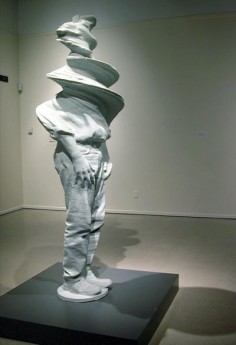DAN COLLINS
twister
source: beijing-tomorrow
Dan Collins is a Professor of Intermedia within the School of Art at Arizona State University and Co-Director of the PRISM lab–an interdisciplinary 3D modeling and rapid prototyping facility. Collins also coordinates the foundation program in basic art instruction and co-directs an alternative art program called Deep Creek Arts in Telluride, Colorado.
Collins obtained his BA in Studio Art/Art History from the University of California,
Davis in 1975, his MA in Art Education/Painting and California State
Teaching Credential from Stanford University in 1976, and a MFA in Sculpture and New Forms from the University of California, Los Angeles in 1984. In 2009 he received a PhD in Interdisciplinary Humanities from Arizona State University in Tempe, Arizona.
Collins has taught for nearly 30 years. As a Fulbright scholar, he was a professor at the Pusat Seni (Art Center), Universiti Sains Malaysia in Penang, Malaysia. Since 1989, he has taught in the School of Art at Arizona State University where he became a full professor in 2005.
Collins is currently working with researchers from across the university on an interdisciplinary 3D visualization project called PRISM (Partnership for Research
in Spatial Modeling). PRISM links research in disciplines as diverse as Industrial Technology, Archaeology, Anthropology, Biomechanical Engineering, Bioscience,
Computer Science, Architecture, Industrial Design, and Sculpture. It is a strategic research focus project funded in part by the Office of the Vice President for Research.
For several years Collins has been involved with SIGGRAPH (Special Interest Group Graphics), an arm of ACM (Association for Computing Machinery). As co-creator of The STUDIO, he has created a hands-on creative environment that encourages SIGGRAPH attendees to work with the latest technologies for 2D and 3D production, animation, and VR “Virtual Reality”. For the 2004 SIGGRAPH at the convention center in Los Angeles, he led a team that built a 25 foot x 15 foot “sand painting” machine that created huge bitmapped images with ½” pixels comprised of silica sand. This past summer he helped design a complete scanning and rapid prototyping lab that allowed attendees to create their own 3D prototypes.
Most recently he has been involved in creating interactive terrain models for museums, such as the Exploratorium in San Francisco, that allow participants to control the parameters of animations projected onto three-dimensional reliefs.
“I draw upon a range of interdisciplinary approaches to art theory and production, including site specific sculpture, performance, interactive computer graphics, 3D visualization and rapid prototyping, and data capture and modeling technologies including laser scanning, satellite imaging, terrain modeling, and Geographic Information Systems (GIS). I situate my work in the gap between the body and technology — between the hand-made and the high-tech. Lately, I have been looking at interactive educational media, ethnographic research methods, game-theory, and participatory “mapping” as vehicles for celebrating subjective responses to “placemaking” — a welcome echo of my early interest in site-specific sculpture.”


